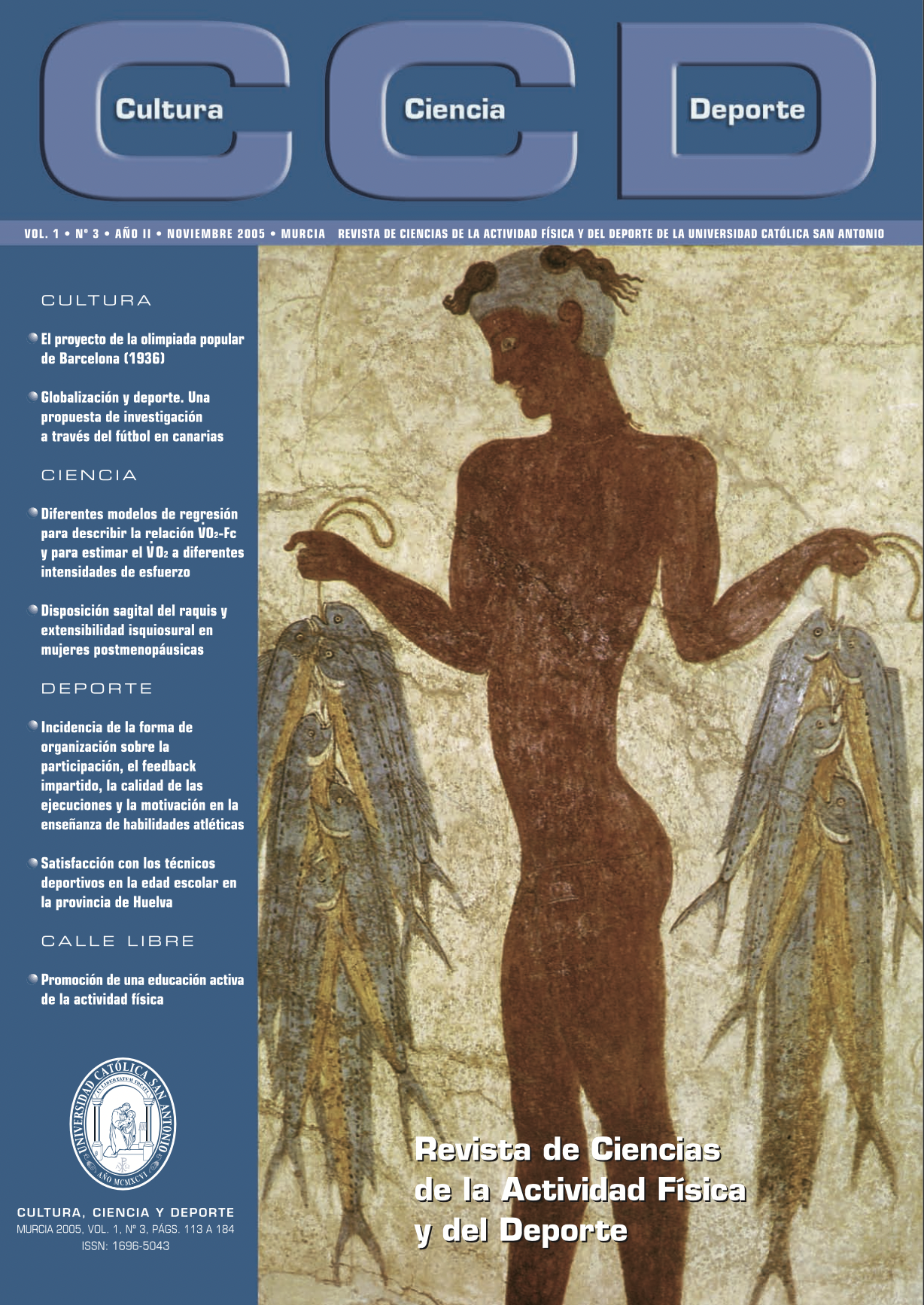Diferentes modelos de regresión para describir la relación vO2-fc y para estimar el vO2 a diferentes intensidades de esfuerzo. (Different models of regression to describe the relation VO2-Fc and to consider the VO2).
DOI:
https://doi.org/10.12800/ccd.v1i3.119Abstract
Muchos son los estudios que demuestran el potencial de la frecuencia cardiaca (FC) para estimar el coste energético de una actividad física, ya que se relaciona directamente con el consumo de oxígeno (V . O2). La mayoría de estudios describen la relación V . O2- FC como lineal para un amplio rango de esfuerzo, exceptuando los valores de reposo aunque se han propuesto diferentes funciones matemáticas continuas no lineales sin existir todavía un acuerdo en la ecuación más apropiada. También existen estudios que apuntan un cambio en la relación V . O2-FC en función de la intensidad del esfuerzo. Nuestro objetivo fue determinar cuál es la mejor función matemática que describe la relación entre la FC y el V . O2 y decidir cuál es la mejor función matemática para estimar el V . O2 a diferentes intensidades de esfuerzo. Participaron 14 sujetos que realizaron una prueba de esfuerzo máxima sobre cicloergómetro y una prueba que consistía en pedalear a 5 intensidades de esfuerzo (40, 50, 60, 70 y 80% del V . O2max) durante 3 minutos. Durante ambas pruebas se midió V . O2 y frecuencia cardiaca. El modelo lineal y potencial fueron los modelos matemáticos más exactos para describir la relación V . O2-FC. El mayor error de estimación se produjo a bajas intensidades de esfuerzo. En conclusión, la elección de un tipo u otro de regresión influye en la exactitud del método de monitorización de la frecuencia cardiaca.
Palabras clave: Consumo de oxígeno, frecuencia cardiaca, gasto energético.
===
Abstract
Many studies demonstrate the potential of the heart rate (HR) to estimate the energy expenditure of a specific physical activity, since it is directly related to the oxygen uptake (V . O2). Studies describe the O2-HR relationship as linear for a great range of effort, apart from the resting, although there have been proposed different continuous nonlinear mathematical functions. Nevertheless, there is no agreement for the best-suited equation by the moment. There are also studies which report changes in the V . O2-HR relationship according to the intensity of the effort. Our objective was to determine which is the best mathematical function to describe the existing relationship among HR and V . O2, and to state which one is the best mathematical function to estimate the V . O2 at different intensities of effort. Fourteen subjects performed a maximal test on a cycle ergometer, and another test which consisted in pedalling at 5 different intensities of effort (40, 50, 60, 70 and 80 % of the V . O2max) during 3 minutes. V . O2 and HR data were collected during both tests. The linear model and the potential model were the most exact mathematical models to describe V . O2-HR relation. The greater estimate error was found at low effort intensities. In conclusion, selecting the regression model can possibly affect of the monitoring method for the HR.
Key words: Oxygen uptake, heart rate, energy expenditure.
Downloads
How to Cite
Issue
Section
License
The authors who publish in this journal agree with the following terms:
- The authors retain the copyright and guarantee the journal the right to be the first publication of the work as well as licensed under a Creative Commons Attribution License that allows others to share the work with recognition of the authorship of the work and the initial publication in this journal.













